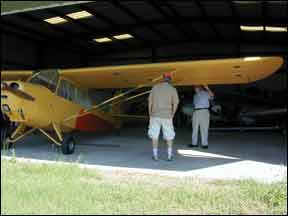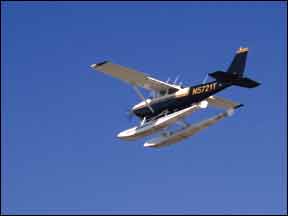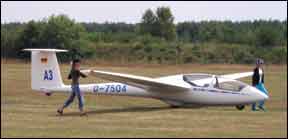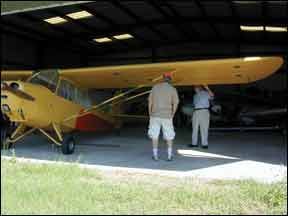Aviation engages us in various checks and balances, all in the name of safety-ours as well as those on the ground. Consider the checks faced by aircraft owners and pilots. We have annual inspections and 100-hour checks for aircraft commercially engaged. The goal, of course, is assuring the airworthiness and safe operating condition of the aircraft, spinner to tailcone. 288 Humans also face an “airworthiness” check, the medical exam. The intervals vary, too. Beyond our own “airframe” inspection, our favorite aviation agency also requires a periodic demonstration of our competence every two years called the flight review. A fixture since the mid-1970s, the “biennial” flight review, BFR, serves as a source of aggravation for some, anxiety for others. Among some frequent aviators, the BFR seems a redundant bother; at the opposite end of the experience scale, some infrequent aviators fret over the prospect of botching it. Theres no need for either emotion, really, not if you take the flight review for what the FAA intended: an opportunity to improve your pilotage. Are flight reviews needed? The FAA first proposed a requirement for an every-two-year flight review in 1974, a period when general-aviation safety issues heightened public and political pressure for a rule designed to force a pilot-proficiency check. Using its regulation-writing latitude, the FAA devised a system which, with some tweaks, still consists of a simple, low-level requirement to show our competence to a flight instructor-and work on our weaknesses-every couple of years. We pilots squeaked out from under a couple of BFR “reforms” the FAA proposed in the late 1980s, one to make the BFR an annual event for private and recreational certificate holders; another proposed requiring a review for every rated type: one for single-engine land, another for seaplanes and yet another for gliders, for example. In 1992, the FAA abandoned the annual-inspection-for-pilots idea but revised the flight review to add one hour of ground instruction to the hour of flight work, which remains todays requirement. Still, 37 years into the requirement, debates and doubts remain concerning the value of the BFR. On the pro-BFR side of the coin, consider the 50-hour (or less) pilot is barely flying an hour a week-and more than likely flying an hour or so here and there, with one or two long trips accounting for the bulk of that 50 hours…if that many. Requiring pilots flying this little to hook up with an instructor every couple of years to review regulations, flight planning and the like, then provide a demonstration of their skills, cant hurt and safety experts strongly suggest it helps. The opposite view often comes from the non-pro pilot who flies what he or she feels is more than ample hours to sustain proficiency. But several professional simulator instructors and a few CFIs note the frequency with which they see active pilots demonstrate bad habits, which have slowly crept in among their good habits. Those little issues generally arent apparent to the pilot-until a CFI exploits the problem and makes it a revealing, learning moment. “Theyre usually sort of surprised since they didnt realize what they were doing could create a problem,” one observed to us. “Some pros get weary of the six-month recurrency mill, but the true pros never complain about a chance to learn and improve a con. Learn often, live longer.” Yes, Theres A Structure Of course, FAR 61.56(c) tells us, “…no person may act as pilot in command (PIC) of an aircraft unless within the preceding 24 calendar months that person has…accomplished a successful flight review in an aircraft for which that pilot is rated….” The reg also details that the check must be administered by “an appropriately rated instructor or other designated person” and details the minimum requirements. Why? According to the regulation, to ensure that pilots have an opportunity to ride with a flight instructor of their own choice for an “appraisal of their pilot proficiency 288 and to seek assistance or guidance if any deficiency is identified.” While the goal is specific, the method for accomplishing a review is broadly defined and unusually flexible, even providing several alternative compliance means. (See the sidebar on page 10.) Pros suggest you pick a tough-but-fair CFI-preferably someone with whom you normally dont fly-and start planning your review. Meanwhile, the FAAs Advisory Circular on BFRs, AC 61-98A, Currency and Additional Qualification Requirements for Certificated Pilots, recommends the pilot and CFI meet, talk and work out specifics of the review well ahead of the actual date. Thus, the CFI can assess your needs and help develop a plan suitable for your situation, experience and aircraft qualifications. The rule also mandates the review consist of two different segments: a ground phase, during which the CFI checks your memory of regulations, rules of the road and such; and a flight phase, in which, at a minimum, the CFI is supposed to cover the maneuvers, procedures and judgment which, in the CFIs opinion, are important to ensure you can perform safely as a pilot in whatever environment you normally fly. Emphases The CFI may also, based on your flying habits, emphasize specific areas believed to raise particular challenges for you. Maybe its rules and regs for accessing Class B versus Class C, VFR/IFR minimums…you get the idea. Another great topic for almost any pilot is reviewing TFR rules, how and why to access the Notams listing them, and a discussion of intercept procedures. If the pilot regularly flies near Washington, D.C., a review of the ADIZ and the very specific training requirements the FAA wants met, as well as the specific airport, transit and communications requirements should be considered a must. If a lot of instrument cross-countries are in the pilots future, reviewing ways to access and evaluate weather information and make decisions based on that data are always appropriate. During the flying portion of the review the CFI will want to see pilot skill, knowledge, judgment. If, as the FAA reminds us in AC 61-98A, the pilot primarily flies one type but is rated in others-say, a single-engine airplanes and glider ratings-the candidate may opt to fly the flight review in the sailplane, and it counts for both; adding elements to include powered aircraft would be wise. But if youre among the many rated in several types-such as multi-engine, single-engine instrument, glider or balloon-designing your review to cover the most demanding isnt a bad idea; neither is it a bad idea to consider a second flight segment in one of the rated types. Keep in mind the rules never bar you from going farther than required. Remember, too: Its not a second check ride, but a status check-and a learning opportunity. Outlining your BFR A flight review isnt your average trip to the airport-well, maybe it is if you always plan a flight in great detail, with time, altitudes, route and fuel stops laid out before leaving the house. You may need to for the flight review. Ideally, a BFR is something you prepare to learn from, versus an ordeal to endure. 288 The CFIs consulted for this article concurred on a basic outline, so weve tried to distill their views down to a roadmap or outline. Both the FAA and active CFIs-including independents, FAR 141 school instructors and instructors employed by the dominant simulator-based training outlets-concur on the basics appearing in the sidebar above. Better still, do what many semi-pro pilots of my acquaintance do: Invite a CFI to fly along every 90 to 180 days, just to watch you, challenge you, and continue that routine right up to the 24-month deadline. You might want to focus on some acro, throw on the hood, or practice short/soft-field work, or do some airwork and listen to the critique. Then you can basically fulfill FAR 61.56(b) with each CFI ride and the BFR will be anti-climatic because it will never come up-and youll still receive a useful, regular review, much like airline pilots do with their sim recurrent training sessions every six months. Just be sure to get the endorsement, when appropriate. Think of it as a WINGS program, but without the formal FAA structure, but with similar results. And what about the WINGS program? Per FAR 61.56(e), a pilot who has “satisfactorily accomplished one or more phases of an FAA-sponsored pilot proficiency award program” within the 24-month review period is not required to accomplish a separate flight review. Currently, the WINGS program is the FAAs only “sponsored” pilot proficiency program. To learn more about the program and participate, check the sidebar on the opposite page. My favorite alternative to the BFR, though, is upgrading with a new rating. Per FAR 61.56(d), a pilot who has “satisfactorily accomplished one or more phases of an FAA-sponsored pilot proficiency award program” within the 24-month review period is not required to accomplish a separate flight review. So, what upgrade tempts you? Whatever you choose, if it requires a checkride, it counts. Additional ratings for seaplanes, gliders, balloons and multi-engine airplanes are included. So is adding that instrument rating youve always wanted-yeah, thats a lot more work than most of the others, but few add-ons feel better, are more useful, or more improves our headwork than being able to go IFR. Regardless, all qualify. Whatever you choose, however, remember: You begin a new 24-month calendar countdown on the date of that new rating. So, you may want to consider timing the ride to coincide with the end of your current 24-month cycle to get the maximum bang out of the bucks for that new rating. An Opportunity Yes, the BFR can be a redundant distraction for many of us who fly a lot. Its one result of trying to come up with a “one-size-fits-all” means to ensure even the lowest common denominator gets into a cockpit with an instructor every now and then. But the basic idea is sound: We all need a critical appraisal of our skills and understandings every now and then. Like everything else in life or aviation, well get out of it what we put into it. Instead of looking at the BFR as a problem, look at it as an opportunity to learn something new, maybe add a new string of text to your ticket. Regardless, youll get another FAA stamp of approval so you can fly-safely, hopefully-for another two years. Dave Higdon is a professional aviation writer/photographer with several thousand hours of flight time-and more than a few BFRs-in hang gliders, ultralights and airplanes.






